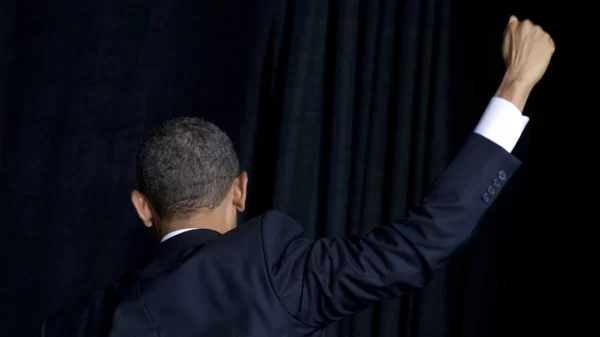SANTA FE, NM (By Jon Garrido, The Jon Garrido Network) March 16, 2011 ― New Mexico has retained its place as the most Hispanic state in the union and Hispanics are responsible for most of its growth over the past decade.
U.S. Census Bureau figures released Tuesday show New Mexico grew by more than 240,000 people over the decade to 2 million, with 78 percent of that increase from New Mexico’s Hispanics.
The country’s shift in the Southwest is strong in New Mexico despite the blow of the recession, the 2010 Census shows.
New Mexico’s population grew 13.2% to 2.06 million from 2000 to 2010.
Seventeen of the 20 largest cities grew. Rio Rancho saw the biggest boom: 69% to 87,521. Albuquerque remained the state’s most populous city, growing 21.7% to 545,852. Las Cruces, the second-most populous city, grew 31.4% to 97,618.
Sixteen of the 20 largest counties saw growth. Sandoval County, home to Rio Rancho, had the biggest increase: 46.3% to 131,561 residents.
Demographer Jack Baker says people have been flooding into Sandoval County and Rio Rancho in response to an aggressive marketing campaign for those two areas.
“What we’ve really seen is a tremendous explosion of growth really between 2003, tapering off in 2007 and into the 2010 Census count,” says Baker, state representative for the federal-state program on population estimates at the University of New Mexico.
Many newcomers are young families migrating within the state, Baker says.
William Frey, a demographer with the Brookings Institution, a Washington research organization, also credited the rise to the growth in the Hispanic population.
For the first time in the state’s history, the Hispanic numbers surpassed those of non-Hispanic whites, according to Census data. Hispanics now represent 46.3% of New Mexico’s population, or 953,403, a 24.6% increase. Non-Hispanic whites are 40.5% of the population, or 833,810, a growth of 2.5%.
“A lot of the growth in the Latino community is really attributed to birth,” said Liany Arroyo, associate director for education and children’s policy at the National Council of La Raza, a Washington organization that lobbies for Hispanic Americans. “We know the Latino community as a whole has larger families on average.”
Frey says of New Mexico: “Always a heavily Hispanic state, its loss of whites suggests this will be the case well into the future.”
The number of Hispanics counted in the 2010 Census has been larger than expected in most states for which the Census Bureau has released totals so far, according to a Pew Hispanic Center analysis. The gap between the Census 2010 count and Census Bureau population estimates has been widest in states with relatively small Hispanic populations.
In the 33 states for which the Census Bureau has released 2010 Census counts of Hispanics, they accounted for 58% of population growth over the decade. The combined Census 2010 total of 38.7 million Hispanics in those states was higher by 590,000 people (1.5%) than the bureau’s own estimates.
The gap between the Census 2010 count and the bureau’s projections was widest in states in the Southeast and upper Midwest of the United States which had not previously had large Hispanic populations.
States with the greatest discrepancy included Kansas, Louisiana and Alabama, where the estimates and census tally were adrift by 10.8 percent, 13.2 percent and 15.9 percent respectively.
The projections for the traditional Hispanic destinations of California, Texas and Illinois, meanwhile, were out from the final tally by 0.7 percent, 0.9 percent and 1.1 percent respectively..
Also read: Stop Hispanic Violence
“In the traditional Hispanic states the estimates have been very close, but it’s in the newer areas where Hispanics have settled in the past ten years or so that the counts are coming in significantly higher,” said senior demographer Jeffrey S. Passel.
“When trends change, demographers aren’t very good at picking them up until they have changed quite a bit … Generally speaking areas and populations that are growing rapidly tend to be underestimated,” he added, accounting for the discrepancy.
Hispanics are the largest and fastest growing minority in the United States.
A previous Census Bureau projection tipped ethnic and racial minorities in the United States to become the majority by 2050, by which time nearly one in three U.S. residents will be Latino.
New Mexico is now majority – minority state
Figures released yesterday by the Census Bureau show during the past decade, New Mexico joined California as a majority-minority state: The percentage of whites in the New Mexico population declined from 52 percent in 2000 to 45 percent in 2010, while the percentage of Latinos rose from 24.6 percent to 46.3 percent. Minorities: 58.8% of which Hispanic or Latino 46.3% (24.6% change from 2000 -2010), black 2.1%, American Indian 9.4%, and Asian 1%.
Data for New Mexico show the five most populous incorporated places and their 2010 Census counts are Albuquerque, 545,852; Las Cruces, 97,618; Rio Rancho, 87,521; Santa Fe, 67,947; and Roswell, 48,366. Albuquerque grew by 21.7 percent since the 2000 Census. Las Cruces grew by 31.4 percent, Rio Rancho grew by 69.1 percent, Santa Fe grew by 9.2 percent, and Roswell grew by 6.8 percent.
The largest county is Bernalillo, with a population of 662,564. Its population grew by 19.0 percent since 2000. The other counties in the top five include Dona Ana, with a population of 209,233 (increase of 19.8 percent); Santa Fe, 144,170 (increase of 11.5 percent); Sandoval, 131,561 (increase of 46.3 percent); and San Juan, 130,044 (increase of 14.3 percent).
New Mexico is hardly alone in this epochal demographic shift. In the first four states for which the Census Bureau released detailed information – New Jersey, Louisiana, Mississippi and Virginia – the number of whites under age 18 actually declined in the past decade. The numbers of Latinos and Asians among the young, by contrast, are soaring, and they are highest among the youngest.
Nationally, whites are now a minority – 49.9 percent – of Americans age 3 and under. In eight states and the District, according to an analysis by the Brookings Institution’s William Frey, minorities comprise the majority in pre-K and kindergarten. Looking at all school enrollment, from pre-K through graduate school, Frey told the New York Times’ Sabrina Tavernise, whites were 58.8 percent of all students in 2009, down from 64.6 percent in 2000.
What these numbers mean is simply the Republicans have an existential problem. As America becomes increasingly multiracial, the Republicans have elected to become increasingly white.
The GOP’s response to this epochal demographic change has been to do everything in its power to keep America particularly its electorate as white as can be. Republicans have obstructed minorities from voting; required Latinos to present papers if the police ask for them; opposed the Dream Act, which would have conferred citizenship on young immigrants who served in our armed forces or went to college; and called for denying the constitutional right to citizenship to American-born children of undocumented immigrants.
In Nevada, New Mexico, California and Colorado last fall, the Republicans ran statewide candidates who embraced Arizona’s draconian racial identification law. And massive turnout from Latinos, who overwhelmingly voted Democratic, defeated those candidates except for New Mexico. Undaunted, the Republicans since November have doubled down on their anti-immigrant jihad – rejecting the Dream Act during the lame-duck congressional session, continuing to call for more mass deportations and the denial of birthright citizenship. Where once a sizable number of Republican legislators and President George W. Bush were open to immigration reform, hardly any even broach the topic today amid the ever-rightward gallop of the GOP’s voting base, which itself grows whiter every year.
Given the growth of America’s Latino population, and the Republicans’ intensifying and reciprocated hostility to Latinos, the GOP’s only long-term hope for clinging to power is to find ways to restrict the franchise as much as possible to reliably white Americans. In nearly two dozen states, Republicans have pledged to introduce legislation to require various forms of identification at polling places.
The latest wrinkle in limiting minority representation has popped up in Texas, which is going to gain four new congressional seats as a result of the largely Latino population growth the state experienced over the past decade. Latinos account for 65 percent of the state’s growth during that time. Last month, three anti-immigrant activists asked a court to rule undocumented immigrants must not be counted for purposes of the impending decennial redistricting, though the census has tallied residents, not citizens, since it was first conducted in 1790. They are not asking Texas forfeit one or two of its new House seats, mind you. They are merely asking, in effect, districts with substantial Latino populations, in which it is assumed a disproportionate number of the undocumented reside, be made larger than other districts to account for the non-citizens. This would result, of course, in fewer Latino-majority – and fewer Democratic-majority – districts.
The Texas lawsuit, which evokes memories of the constitutional clause that enabled our slave states to count each slave as three-fifths of a human being in order to enlarge those states’ congressional delegations, may well go nowhere. But the transformation of the Republican Party from its origins as the party that favored freedom and as the franchise for all Americans into a party whose continued success depends on restricting that franchise is all but complete. Increasingly, that looks to be the only way that the GOP can keep Texas – and the rest of its electoral college base – red.
New Mexico Crucial for Electoral College Votes in 2012
According to Matt Barreto of Latino Decisions, In the 2008 presidential election, Barack Obama won the important Latino battleground states of Nevada, New Mexico, Colorado and Florida on his way to winning 365 total electoral college votes.
The 46 electors in those four key states back in 2008 were part of the coalition, but in the ended they served more to run up the score, than provide the margin of victory. In 2012, due to declining approval of Obama among Whites, and a change in the number of electoral college votes during reapportionment, Latino voters, and Latino influence states are likely to play a very crucial role in determining which candidate gets to 270 electors.
The four Latino battleground states have gained 3 seats in the U.S. House, resulting in 3 additional electoral college votes 1 in Nevada and 2 in Florida. While Obama carried all four of these Latino states in 2008, the other states he won saw a loss of 9 electoral college votes in reapportionment, for a net loss of 6.
Thus, the starting point for 2012 is 359 electors for Obama and 179 for the Republican candidate with states breaking as they did in 2008. However, Obama approval hovers below 50%, ranging from 46% 54% depending on the poll. That leaves a number of states he won in 2008 as likely Republican pick-ups in 2012.
The most likely pick-ups for the Republicans in 2012 are North Carolina, Virginia, Indiana, Ohio, and the 2nd House district in Nebraska that amounts to a total of 58 electoral college votes, dropping Obama to perhaps 301 electors, to 237 for the Republican opponent, under the new electoral vote state totals following the 2010 Census numbers.
While a dozen or so states will be targeted as battlegrounds in 2012, the 49 votes up for grabs in the four key Latino influence states may be the most competitive, and the most important for Obama to secure. These four states and their 49 electoral college votes have demonstrated growth for two straight reapportionments they had 42 combined votes in the 2000 election, grew to 46 for 2004-2008, and now hold 49 votes; growth that was largely driven by the Latino population, as Sylvia Manzano points out. Not only are they growing, but they are highly competitive.
In 2010, New Mexico and Nevada elected Republican Latino governors, and Florida a Republican Latino U.S. Senator, creating some buzz that with these surrogates, Republicans may attempt to chip away at Obamas strong Latino numbers in each state in 2008.
Indeed, if Obama has only 301 votes leaning towards his column in 2012 these 49 Latino-influence electoral votes are absolutely crucial without which hed be left with just 252 votes. Can he win Ohio in 2012? Maybe. But is he willing to risk re-election on the Buckeye state, or is there more of an opportunity for him in Latino-influence states?
There are limitless possibilities of dividing up the electoral map as we look towards 2012, however it is almost impossible for Obama (as it was for Kerry) to get to 270 electors without winning a minimum of 3 out of 4 of these Latino-influence states. For example, if Obama loses Florida (29 votes) but wins Colorado (9), Nevada (6) and New Mexico (5) he would end up with 272 votes and be re-elected. If he fails to win New Mexico (as Kerry did in 2004), those five electors shift to the GOP side giving them 271 votes. If Obama wins New Mexico, but cant hold Nevada, those six electors would give the GOP 272 votes. Anyway you look at the map in 2012, Obama needs to hold all three of these critical Southwestern states, and the Latino vote, growing in size and influence, will certainly make the difference, just as they did in 2010.
Some content from Pew Hispanic Center and wire services.



























